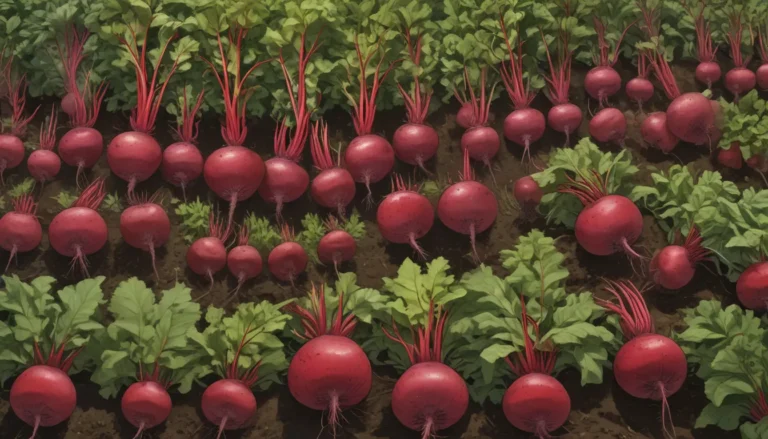Maximizing and Storing Your Tomato Harvest

As the summer heat fades and the growing season comes to a close, many of us find ourselves with an abundance of tomatoes that need to be stored before the winter chill sets in. From green to red to everything in between, there are various stages of ripeness to contend with.
While we all enjoy the juicy, ripe red tomatoes of midsummer, it’s important to know how to properly store and preserve them for later use. Luckily, there are plenty of methods available to extend the life of your tomato harvest and enjoy their delicious flavor for months to come.
In this comprehensive guide, we’ll explore various ways to maximize and store your homegrown tomatoes. From ripening basics to dehydrating, canning, freezing, and even hanging plants, there are plenty of options to suit your needs and preferences. Let’s dive in and learn how to make the most of your tomato harvest!
Understanding Ripening Basics
Ripening tomatoes post-harvest is largely dependent on temperature. The rate at which your tomatoes ripen will vary based on the temperature conditions they are exposed to. Here’s what you need to know about ripening your tomatoes for optimum flavor:
- Green fruits typically ripen in about two weeks at temperatures of 65 to 70°F, while it may take up to four weeks at temperatures of 55 to 60°F.
- Fruits stored at 55°F and below will not ripen further and may go into stasis.
- Very ripe fruits can be stored in the fridge to halt ripening, but should be brought back to room temperature before consuming for the best flavor.
For those with only a few green tomatoes, a bowl on the kitchen counter can suffice for ripening. Adding a ripe apple or banana to the bowl can speed up the process by releasing ethylene gas. Remember to replace the apple or banana weekly for continued ripening.
Boxed Storage for Ripening
Boxed storage is an excellent method for slowly ripening green tomatoes and extending the season for fresh fruit. Here’s how you can effectively store your tomatoes in a box for optimal ripening:
- Wash the fruit in cool water, remove any leaves and stems, and gently dry with a clean towel.
- Line a box with lightly crumpled newsprint and arrange the fruit in a single layer, ensuring they are not touching.
- Add layers of fruit and newsprint as needed, keeping heavier fruits like beefsteaks to a maximum of two layers.
- Store the box in a cool, dark location with moderate humidity and avoid direct sunlight.
- Check weekly and turn the fruit as needed for even ripening. Discard any fruits that show signs of spoilage.
- Retrieve ripening fruit for consumption as they change color and ripen.
With the right conditions, boxed green fruit can be stored for up to six months in cool or unheated basements, cellars, garages, or shaded porches.
Dehydrating Your Harvest
Dehydrating your tomato crop is another delicious way to preserve both green and red fruit for long-term storage. Dried tomatoes have a concentrated flavor, chewy texture, and retain most nutrients. Here’s how you can dehydrate your tomatoes using a food dehydrator or oven:
- Wash the fruit, slice in half, remove the gelatinous center and seeds, and lay the halves on drying trays.
- Sprinkle lightly with salt and dehydrate at 135°F, turning the pieces as needed.
- Store dehydrated pieces in an airtight container, glass jar, or freezer for an extended shelf life.
- Rehydrate dried pieces in hot water or tomato juice for 20 minutes before use.
Dried tomatoes are versatile and can be used in various dishes or enjoyed as a snack. They can be stored for up to six months in a cool, dark cabinet or freezer for up to a year for long-term enjoyment.
Fresh Sauces and Canning Preserves
Preserving your tomato harvest through canning or making fresh sauces for the freezer offers a myriad of options for storage and consumption. Ripe red tomatoes can be used to make various products like chutney, jam, ketchup, paste, sauce, or stewed fruit, while green ones add a tangy kick to dishes like chutney, pickles, or relish.
Canned tomato preserves can retain quality for up to 18 months when stored in a cool, dark, and dry location. Always follow appropriate canning techniques and safety guidelines to ensure the longevity and safety of your preserved products. For more canning tips, check out this resource on the best tomatoes to grow for canning purposes.
Freezing Your Harvest
Freezing is a convenient and effective method to preserve your tomato harvest for later use. While the texture may change upon freezing, frozen tomatoes make a great addition to sauces, soups, and stews. Here are four ways you can freeze your excess harvest:
- Whole with skins on, which is the quickest method but may require skin removal during cooking.
- Sliced with skins on for faster thawing.
- Whole with skins removed, blanched and peeled for easier cooking.
- Peeled and chopped for immediate use in dishes.
Freeze your tomatoes in airtight containers or bags for future use in a variety of recipes. Frozen tomatoes can be stored in the freezer for up to a year for long-term enjoyment.
Hanging Plants for Ripening
An alternative way to ripen your tomatoes is by hanging the entire plant upside down in a cool, sheltered location. This method allows you to harvest ripe fruit as they ripen and provides a convenient solution for storage. While hanging plants may be messy, they offer a quick and easy way to maximize your tomato harvest.
Stretch Out the Goodness
Tomatoes are not only flavorful but also packed with essential nutrients that we all love. By understanding how to properly store and preserve your homegrown tomatoes, you can extend the life of your harvest and enjoy the fruits of your labor for months to come. Whether you choose to ripen in boxed storage, dehydrate, can, freeze, or hang your plants, there are plenty of options available to suit your needs and preferences.
For more recipe inspiration and tomato knowledge, be sure to check out our sister site, Foodal. Do you have a favorite way to store tomatoes? Share your tips and tricks in the comments below!
Expand your knowledge with these additional resources:
- Learn How to Grow the Best Tomatoes
- How to Grow Tomatoes in Containers
- How to Grow Tomatoes from Seed
With these tips and tricks, you’ll be well-equipped to store and maximize your tomato harvest for months to come. Happy harvesting!





